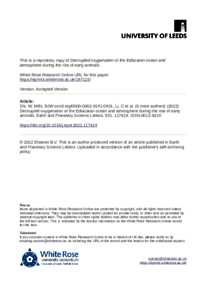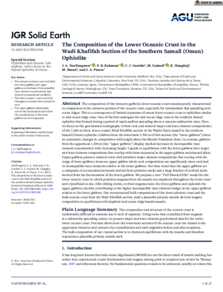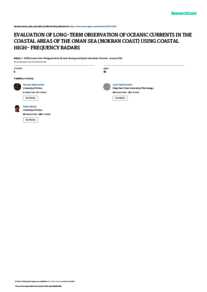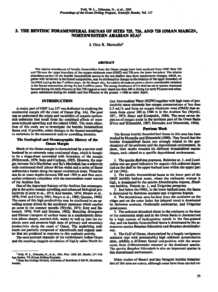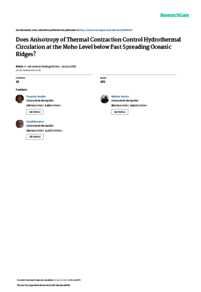وثيقة
Decoupled oxygenation of the Ediacaran Ocean and Atmosphere during the rise of early animals.
المعرف
DOI: 10.1016/j.epsl.2022.117619
المصدر
Earth and Planetary Science Letters. v. 591, 117619
المساهمون
Mills, Benjamin J. W. , مؤلف
Li, Chao., مؤلف
Poulton, Simon W. , مؤلف
Krause, Alexander J. , مؤلف
He, Tianchen., مؤلف
Zhou, Ying., مؤلف
Cheng, Meng., مؤلف
Shields, Graham A. , مؤلف
الدولة
Netherlands.
مكان النشر
Amsterdam
الناشر
Elsevier B.V.
ميلادي
2022-08-01
اللغة
الأنجليزية
الملخص الإنجليزي
The Ediacaran Period (∼635 to 541 Ma) witnessed the early diversification and radiation of metazoans, in the form of the Ediacaran Biota. This biological revolution, beginning at ∼575 Ma, has been widely attributed to a temporally restricted episode of deeper ocean oxygenation, potentially caused by a contemporaneous rise in atmospheric oxygen levels. However, quantitative geochemical-record-driven estimates of Ediacaran atmospheric and oceanic redox evolution are lacking, and hence possible links between oceanic and atmospheric oxygenation remain speculative. Here, after screening for possible post-depositional alteration, we utilize paleogeographically-diverse carbon and sulfur isotope records from South China, Oman and USA-Mexico, to develop a biogeochemical isotope mass balance model to quantify Ediacaran atmospheric oxygen and oceanic sulfate evolution. Model results from all three continents indicate that Ediacaran atmospheric oxygen levels rose monotonically between ∼630 Ma and ∼590 Ma, and subsequently remained relatively stable at around 0.6 present atmospheric level for the remainder of the Ediacaran. By contrast, the marine sulfate reservoir appears to have remained relatively stable before ∼575 Ma, with a subsequent large pulse where sulfate concentrations rose to ∼8 mM. These quantitative results indicate that Ediacaran oceanic and atmospheric oxygenation were decoupled, which is consistent with published geochemical records. We propose that the early Ediacaran rise of atmospheric oxygen levels, driven by increased net burial of organic carbon and pyrite, may not have established widespread deep-ocean oxygenation. Instead, later pulsed input of oxidizing power (mainly sulfate) from the continents drove transient episodes of seafloor oxygenation that accompanied radiations of the Ediacaran Biota.
ISSN
0012-821X
قالب العنصر
مقالات الدوريات

